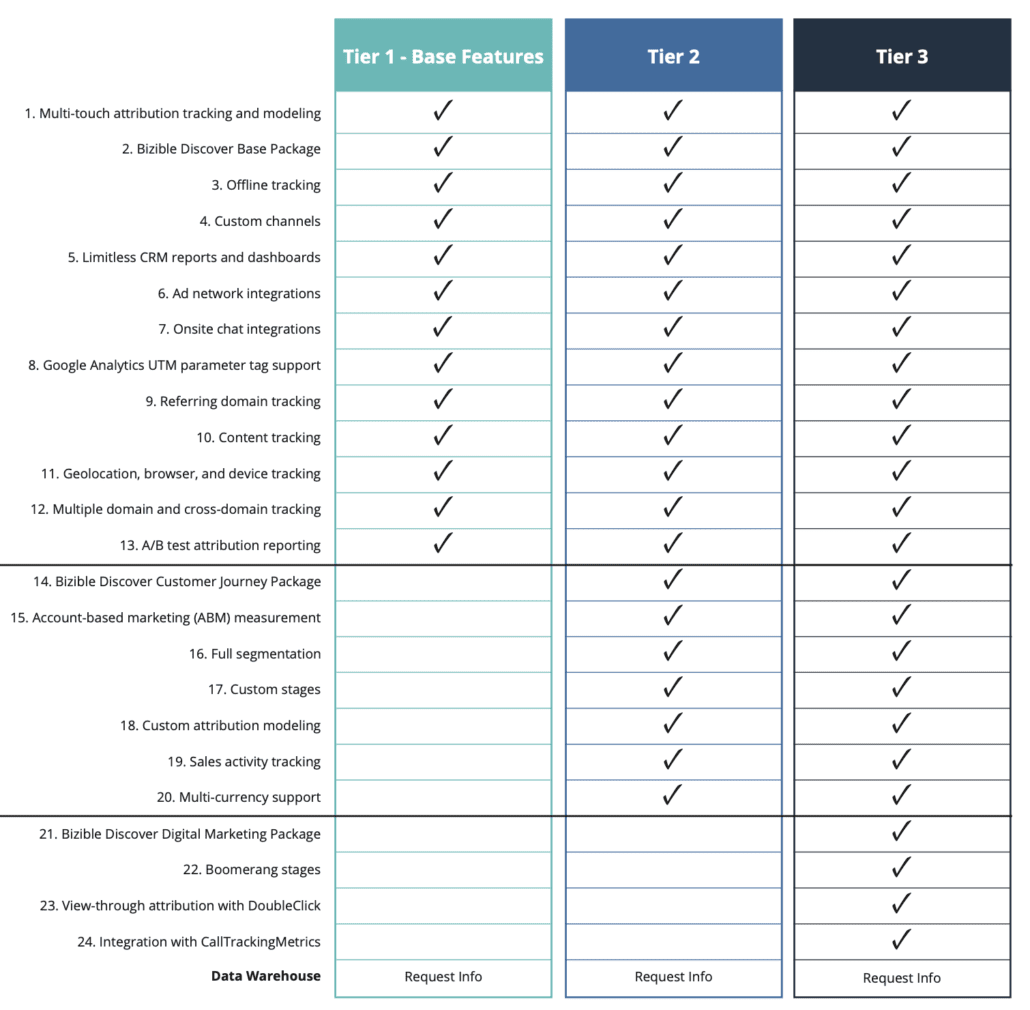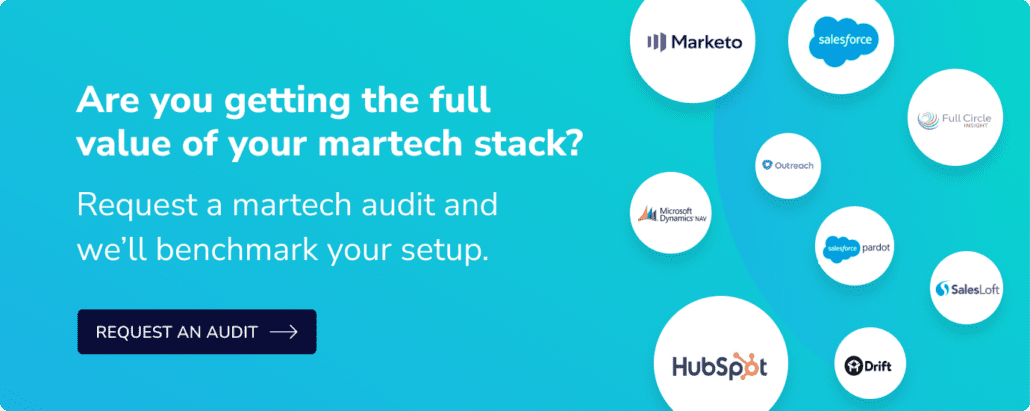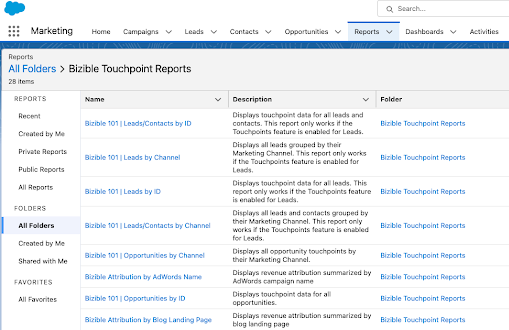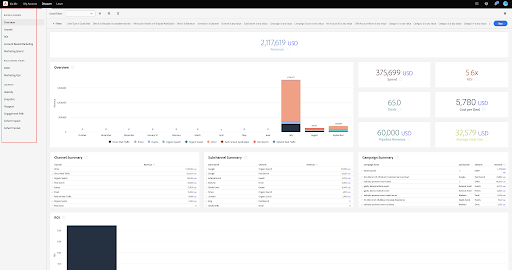Bizible (now called Marketo Measure) gets a lot of hype, and to be honest, the dashboards are great. But it’s not a panacea for teams that are already struggling with attribution reporting. Unfortunately, we’ve seen many companies squander the $40-60k annual investment because they simply weren’t mature enough to realize the benefits Bizible provides. If you’ve been wondering if Bizible is right for your team, this post can help you decide if it’s too much too soon.
>> Related: The Marketing Attribution Playbook <<
In this post:
Are you using Marketo?
This is a simple one – are you using Marketo as your marketing automation platform? Bizible can directly integrate with Salesforce and Dynamics campaigns, but the Marketo integration is particularly fast and clean.
If you’re not using Marketo, you probably don’t have the MOPs maturity to make Bizible worthwhile, and implementation will take even longer and be more challenging. (FWIW Sponge.io has consistently refused to integrate Bizible for any other MAP, including HubSpot and Pardot).
Are you religiously using UTMs?
UTMs effectively power Bizible. If your team is new to UTMs, or isn’t using them correctly/consistently, you’re just not ready. The reason those dashboards are so powerful is because UTMs are feeding data through every touchpoint.
It’s a far better investment to get serious about UTMs first – they’ll power any attribution model or tool you use.
So…
- Are you sharing a UTM builder across your team and agencies?
- Are the definitions for each parameter crystal clear?
- Are junior marketers fluent in which links need UTMs, and do they understand why they’re so important?
- Do managers regularly review UTM usage?
Are you crawling, walking, or running?
We’re big believers that marketing maturity can be quantified and measured over time. Do a comprehensive, honest self-assessment. Does the team already:
- Have a clean/consistent campaign structure?
- Report on conversion rates and velocity between MQL/SAL/SQL/Won?
- Attribute success to marketing/sales/partners and campaign types and individual campaigns?
- Trust the data in Marketo?
- Analyze UTM usage in Google Analytics?
- Know how to hit their MQL target?
- Have consistent definitions for the MQL, SAL, SQL, and Won funnel stages?
In short, a Bizible investment shouldn’t be aspirational, and it will simply break down if your processes aren’t solid.
Do you have a “reporting culture”?
The teams we’ve seen get meaningful return on their Bizible investments are all-in on reporting. They tend to have a few headcount each in Growth, Marketing Ops, and Sales Ops. They have data analysts using Qlik, PowerBI, or Tableau. And they’re fluent in the distortions and nuances within attribution modeling.
Bizible is a great investment for these teams, because it truly unlocks the next level of reporting and attribution insights. Bizible has pre-built attribution models, including first touch, last touch, lead creation, and W-shaped models. And even more sophisticated teams can input custom funnel stages or attribution models.
How to pick a Bizible tier
Slow clap if you’ve made it this far – Bizible is honestly a great fit for your team.
Now you get to decide how much Bizible you want, because there are actually three tiers of product:
Click to expand
Generally, this has a real Goldilocks vibe. Tier 1 is too basic, Tier 3 is too much, and Tier 2 is just right (especially if you care about ABM).
Tier 2 also unlocks Sales activity tracking, so you can get a fuller understanding of how sales and marketing are each influencing pipeline.
What about Microsoft Dynamics?
We’ve integrated Bizible with both Salesforce and Dynamics. In both cases, the Adobe documentation is nicely prescriptive and ensures the integration is correct. We basically have no concerns integrating with Dynamics, and as an added bonus, you can further connect Bizible with PowerBI and have some seriously powerful reporting.
FAQs
What is a UTM?
A UTM, or Urchin Tracking Module, is a code appended to a URL to track and analyze the effectiveness of online marketing campaigns. UTMs are used to capture specific information about the source, medium, campaign, and other parameters associated with a URL, providing valuable insights into the performance of different marketing channels and efforts.
What is the difference between first touch and last touch attribution?
First touch attribution and last touch attribution are two different models used in marketing to assign credit to specific touchpoints along the customer journey. First touch assigns all the credit for a conversion to the first interaction that a customer had with the company or its marketing channels.
Last touch assumes the last interaction in the customer journey is considered the most influential in driving the conversion.
What is marketing attribution?
Marketing attribution is the process of assigning credit to various touchpoints or interactions in a customer’s journey that lead to a desired outcome, such as a conversion, sale, or other valuable actions.






